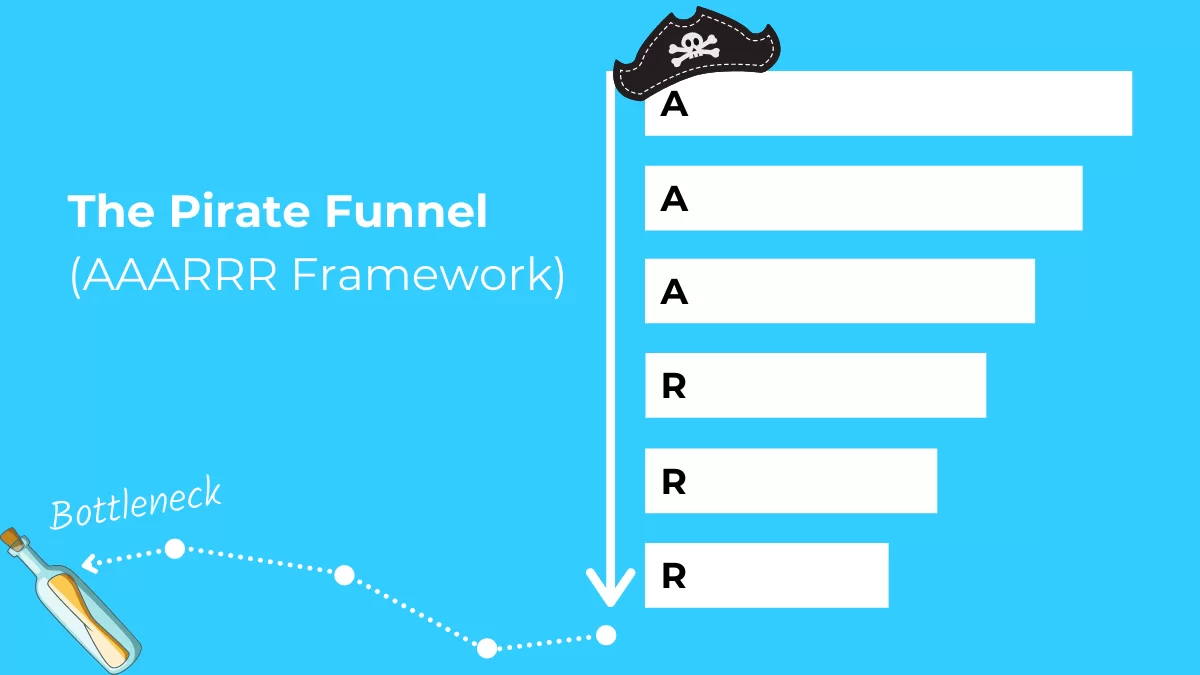MINDSCAPE is hosting a webinar on October 6th! At this event, our president, Jeff Bell, will be discussing the six stages of customer experience. He’ll review each stage and its purpose, arm you with metrics to track growth, provide some tactics for improving your performance, and warn you about common mistakes.
This event is intended to provide valuable information for everyone who attends. While we’ll be covering the basics, even seasoned vets of customer experience should be able to get some value from the tactics, metrics, and pitfalls we’ll discuss.
For those just getting started on the path to learning the ins and outs of customer experience, you may not be familiar with what the stages are – let alone what strategies to employ at each stage. This blog post intends to lay out the basics of the “Pirate” framework of customer experience that we use at MINDSCAPE so you can feel prepared to take the next steps at our webinar.
The AAARRR “Pirate” CX Framework
As hinted at earlier, the CX framework we find most effective at MINDSCAPE is the AAARRR or Pirate framework. This model is divided into six stages.
- Awareness
- Acquisition
- Activation
- Revenue
- Retention
- Reputation (Referral)

Awareness
The Awareness stage of customer experience is centered around getting complete strangers to become familiar with our brand. People can’t buy from us if they don’t know who we are, what we do, or what problems we solve. Our ultimate goal at this stage should be to get our name and message in front of as many people as possible, and hopefully, turn these people into visitors to our website.
Some of the most common ways to generate awareness through digital marketing are with digital ad campaigns, social media marketing, and search engine optimization.

Acquisition
The Acquisition stage of customer experience is where we turn website visitors into leads. That means capturing some of their personal information. Having a strong website design and engaging content and imagery are pivotal to making a good first impression and getting website visitors to explore your site. Offerings such as quizzes, how-to-guides, and discounts that users can trade their personal information for are a great way to get new users to convert.

Activation
Just because a lead has shared their information with us, it doesn’t mean they are going to buy our product or service. That’s where the activation stage comes into play. It is all about turning leads who are just interested in our product or service, into leads who are ready to make a purchase. Things like email nurture campaigns, automation, and lead scoring are great ways to move leads further along in their buying journey and get them ready to buy.

Revenue
Revenue is probably the most straightforward stage of customer experience. This is where we turn leads who are ready to buy (often labeled sales qualified leads) into actual customers! At this stage, leads are ready to make a purchase, but they may not be sure which company they want to purchase from. Having good reviews, case studies, competitor comparison charts, benefit content, performance data, etc., is a great way to ensure that we get the sale over our competitors.

Retention
Retention is the amount of incremental revenue that we can generate from a given client. Ideally, we’d like all of our customers to become repeat customers – the goal is to generate customers who want to stick around.
By this stage, we should already have a large chunk of data on our customers – including what products or services they’ve purchased. We can use this information to market similar or complementary products to our customers and increase our chances of making repeat sales.
Some common digital marketing strategies that are used at this stage are ongoing email promotion, customer loyalty programs, upselling and cross-selling, and the creation of customer tools and resources.

Referral Or Reputaton
The Referral stage or the “Reputation” stage is often overlooked. We’ve gotten a customer, they’ve become a repeat buyer, what more is there to do? Well, if we want to make it easier for other customers to purchase from us, we need to get our current customers to become brand advocates.
Things like customer satisfaction surveys, review solicitation campaigns, and referral campaigns are great strategies for seeing how good of an experience we are delivering to our customers. They are also great ways to prove to new buyers that we are trustworthy and deliver good products/services.
Don’t Forget to Sign Up for our Webinar
If you appreciated the content of this post, you’re going to love our webinar on October 6th. This event is completely free of charge and will begin at 3pm EST. We hope to see you there!





